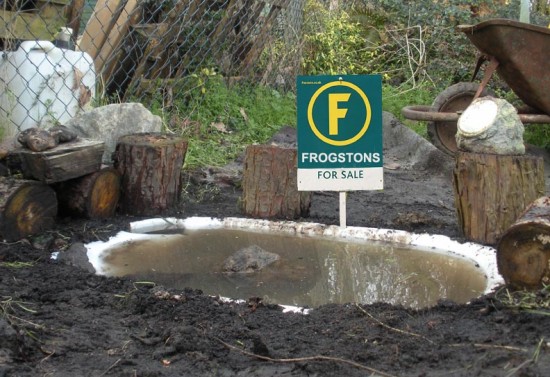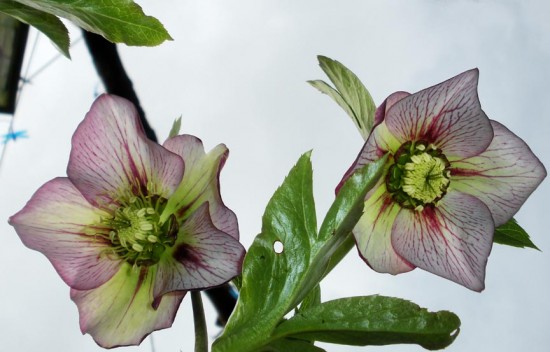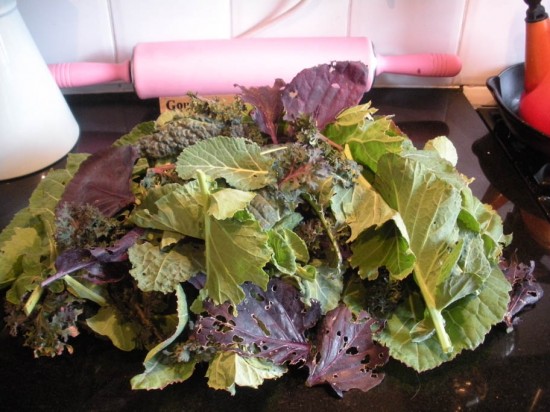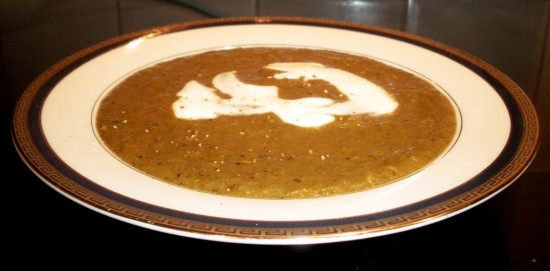Introducing a new monthly column by Nina Walsh:February
The bin men have refused to collect the plastic baby bath, dumped by my neighbour in the alley next to my flat for over two months now. Instead of cursing the thing every time I trip over it I decided that February was a good time to put it to use.
It’s not a particularly interesting month for allotments and the rain has clogged up the soil so much that digging over beds is hard work and messy. A baby bath is just what’s needed! Spending big dollar at the garden centre kind of defeats the object of keeping an allotment so improvising is key. Rotten windows, glass shower curtains, old fence panels and of course baby baths all contribute to these urban agricultural shanty towns, our little pieces of England. After digging a hole large enough to accommodate the bath and wheel barrowing several heavy loads of clay and rubble to the communal green dump the bath is dropped into place. The gaps around the edges are filled with soil and stones, a few large rocks are plunged into the bath to form platforms, some water loving bulbs and grasses planted around the peripheries and finally two small logs with a brick on top are situated to one side. This my friends is frog heaven!
Frogs are good. They eat the slugs that eat your vegetables. Well that’s the plan if I can convince any to move in before the seedlings are planted out after the final frosts. By creating your own little ecosystem in this way, not only are you saving on slug pellets but also establishing a sacred space for both you and the local wildlife to ponder the sunny summer months ahead. I remain optimistic.
The first bit of colour to show its face this year is the splendid Helleborus Orientalis. A fine creature indeed! Flowering late winter to early spring it watches in anticipation as the crocus and tulips begin to break through the soil. It’s not just about vegetables you know………..
If like me, your brassicas failed miserably this year here’s a quick recipe to make use of some of the excess foliage. These cruciferous vegetables are packed with vitamins so rather than pull up the fruitless failures and dump them why not try eating them instead?
Failed Brassica Soup
Ingredients:
Slug munched kale
Sproutless sprout greens
Frost bitten broccoli greens
Cauliflower leaves
Failed cabbage foliage
(any or all of the above and enough to fill a pot)
1large onion sliced
1 large potato diced (about 2cm cubes)
1 tablespoon Marmite
1 pint Cider
1 pint of Vegetable stock (made from the water used for steaming the brassica leaves)
2 tablespoons of plain flour
1 tablespoon toasted fennel seeds
Pancetta (optional)
Butter
Salt & Pepper
Method:
Wash, chop and steam the leaves until soft but not soggy. Kale will take longer so start these off first. Put to one side.
Grind and toast the fennel seeds in the oven at about 160c for about 8 mins.
Melt a couple of tablespoons of butter and slowly cook the onions until brown and almost caramelised. Add the diced potatoes and cook until just soft. You may need to add more butter here.
Now add the flour to absorb the juice and cook lightly for a few minutes then slowly pour in the cider and the vegetable stock a little at a time. Pop in the brassica leaves, toasted fennel seeds and Marmite and let simmer for 30 minutes with a lid on. Finally turn the heat down and blend with an electric hand blender. Season to taste.
Serve with a swirl of natural yogurt or to add a bit of texture and meaty flavour try frying up a handful of pancetta and add to the soup before serving.
Not bad for a failed crop!



